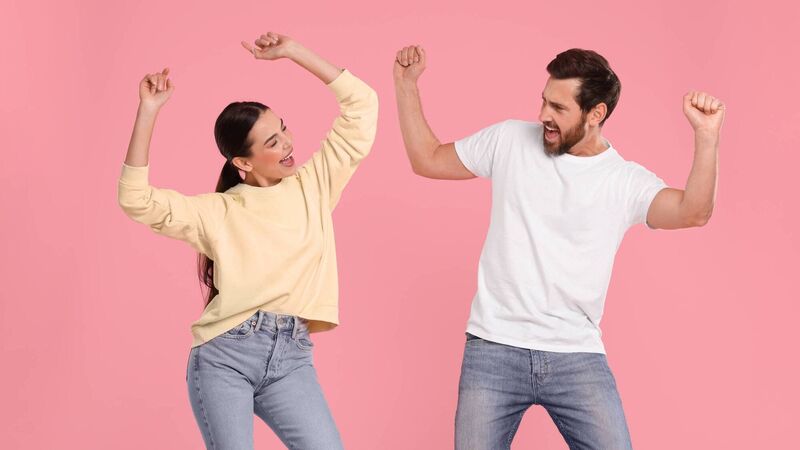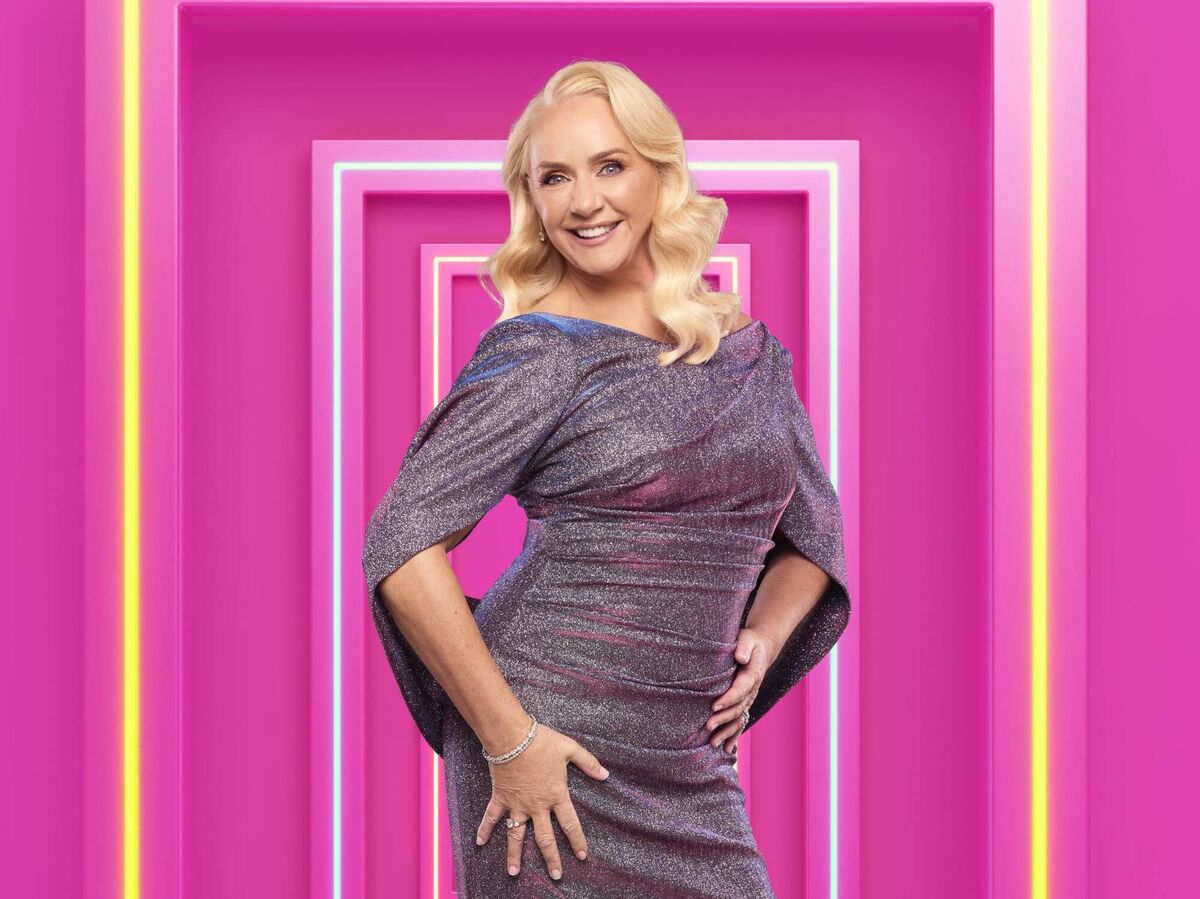Expert advice on how to dance yourself fit and happy as Dancing with the Stars returns

Dancing has been shown to particularly benefit heart health and it has a beneficial impact on our brain.
Dancing with the Stars is back on our screens this Sunday. It will feature four new professional dancers and a glitzy lineup of celebs, including Olympian Rhys McClenaghan, TV presenter Elaine Crowley, and singer Mickey Joe Harte.
Loraine Barry is excited about returning for her eighth season as head judge.
“I still feel the same adrenaline rush that I felt in the run-up to the first season,” she says, adding there are always surprises.
One of the big surprises this year was the announcement that the professional dancer and two-time Dancing with the Stars winner Karen Byrne would be joining the judging panel alongside Barry, Brian Redmond, and Arthur Gourounlian.
Whatever happens, fellow judge Brian Redmond is looking forward to seeing how Dancing with the Stars impacts the public.
“Every year, people are drawn in by the show’s characters, music, and spectacle,” he says. “The show also sparks their interest in dance. From chatting with people on the street and in my dance classes, I can see it makes people realise that dance offers them a chance to learn something new, that it’s an activity they can enjoy as a couple and that it can be a fun form of fitness.”
The popularity of Dance Yourself Fit classes across Ireland is proof of this, with people gathering in more than 50 venues nationwide for workouts based on ballroom and Latin dances.
Dr Julia F Christensen is a former dancer turned neuroscientist at the Max Planck Institute for Empirical Aesthetics in Frankfurt and author of Dancing is the Best Medicine. She believes dancing is one of the best ways of getting and staying physically and mentally fit.

“It’s an aerobic sport that delivers a cardiovascular workout, bringing the heart rate up above 140 beats per minute,” she says. “The WHO recommends that we all get 150 to 180 minutes of aerobic exercise every week, and dancing is a great way to do that.”
Dancing has been shown to particularly benefit heart health, as demonstrated in a 2016 Australian study. By following 50,000 adults over 12 years, it found that those who danced regularly had a 46% reduced risk of heart attack and stroke, a finding that wasn’t replicated in other physical activities of similar intensity.
Dance also has a beneficial impact on our brain.
“Dance combines the power of music with a strong multi-sensory experience that stimulates connections between different parts of the brain,” says Christensen. “As our heads start nodding and feet start tapping to the rhythm, a cascade of hormones and neurotransmitters are released, which are good for our health and have a positive knock-on effect on our mood, creating an intrinsic sense of pleasure and joy.”
Another important advantage of dancing is that it’s usually a social activity - also good for brain health.
“The touch that’s involved in dancing, the smiles and positive words that are exchanged; they all feed into systems of the brain that surround a structure called the insula,” says Christensen. “It’s involved in processing our social and emotional world and in processes that regulate our health. The physical and emotional connection with others that we get in dance stimulates these systems and in turn helps to regulate our immune system.”
Dancing for the mind

Dancing is thought to protect us from mental decline, which Christensen links to the multi-tasking we have to do when learning new steps.
“We all remember learning to drive and struggling to coordinate all of the actions involved but they eventually became second nature,” she says. “Dancing can be like this too, with the brain’s neuroplasticity being stimulated and the brain’s neurons being encouraged to make new connections.”
In 2003, a team at the Albert Einstein College of Medicine in New York showed that regular dancing reduced the risk of dementia in older adults by 76%. In 2017, a German study suggested that this could be due to dancing’s positive effect on the brain’s hippocampus — a region responsible for long and short-term memory, as well as spatial navigation that tends to be larger in those who dance regularly.
A 2005 study carried out in Korea showed that dancing can also support good mental health. In the study, a group of teenagers with depression were given 12 weeks of dance movement therapy and their self-reported scores of psychological distress improved afterwards, as did their levels of the feel-good neurotransmitters serotonin and dopamine.
Christensen wonders if this might be because of the repetitive nature of dance.
“For many people, life is rather unpredictable and that unpredictability is uncomfortable for our brains and can lead to bad mental health,” she says. “Dance, on the other hand, can help restore a sense of control and predictability to our minds, and it can lead to flow, that special state that’s so healthy because it stops ruminative thought loops.”

In 2017, Alycia Fong Yan from the University of Sydney’s Faculty of Medicine and Health led a review of the existing academic research into dance. It concluded that undertaking a structured dance class was just as good as other forms of structured exercise in terms of enhancing cardiovascular function and mobility and better when it came to improving body composition, blood biomarkers, and musculoskeletal function.
In 2024, she published another review that concluded dance was better than other forms of physical activity for improving a range of psychological and cognitive outcomes, including emotional wellbeing, depression, and some forms of memory.
“We found that people of all ages and fitness levels who dance see benefits across the board,” says Fong Yan. “Structured dance classes had just as many positive effects, if not more, than other forms of structured exercise.”
Like Christensen, Fong Yan is a former dancer and her scientific research has driven her to encourage more people to start dancing.
“After a class, I’m puffed, sweating and exhausted but I’ve had an amazing time,” she says. “If someone told me to do 80 squats and lunges and 40 jumps, I’d be put off at the thought of it. But I do all these things in a dance class without thinking about it because I’m having so much fun."
Time to tango

Dancing is a hobby that delivers the “biggest health benefits,” says Christensen. And the best results are enjoyed by those who dance for fun. “Those who dance competitively don’t get the same results because competition triggers the body’s stress response, negatively impacting the immune system.”
Others may rule themselves out of dance classes because they think they have two left feet. Nonsense, says Christensen, who points to studies in newborns showing that their brainwaves synchronise to rhythmic sounds, suggesting that we are all born to dance.
“We just unlearn that natural drive as we grow up,” she says. “If you’re someone who likes listening to music, then you can dance. It might take you time, effort, and patience to learn choreographed dance steps like salsa or line dancing but your brain has the neuroplasticity required to do so, no matter what age you are.”
Barry still dances for fitness, adding: “I may have hung up my competitive dancing shoes, but from when I started dancing as a six-year-old at the back of a church in Cabra, I’ve always loved dancing. I’ve just celebrated my 60th birthday and think that dancing, stretching, and walking have kept me fit and healthy so far. I hope to continue dancing, stretching, and walking right up until I hit the big 100.”
Redmond admits that he needs to dance more: “To be honest, even though I still teach dancing on Mondays and Tuesdays, I spend more time sitting on my backside than I should. I definitely need to follow the example of Dancing with the Stars and make more time to dance.”
- The new series of Dancing with the Stars begins on RTÉ One and RTÉ Player at 6:30pm on Sunday, January 5
Every good reason to take up a dance class in January

Our experts give their reasons why we should all consider taking up a dance class this January.
Alycia Fong Yan argues that dance age-proofs the body. “It works the muscles, builds the strength and is great for bone health,” she says.
“It improves your reaction times and develops your spatial awareness. The lighter and quicker you are on your feet, the less chance you’ll have falls. You don’t have to do the boring falls prevention class. Do a dance class instead.”
Loraine Barry points out that dance creates a connection with others: “There’s something special about reaching out and touching another person and moving your bodies together in rhythm.”
Julia F Christensen assures us there is a dance form for almost everyone.
“Dance styles can vary in their complexity and in the time it takes to learn them, in their musical backing and even in the clothes people wear while dancing,” she says.
You may have to try a few different styles before you find the one that suits you.
Barry also emphasises that nobody starts dancing elaborate moves like the ones we see on the TV show Dancing with the Stars.
“Everyone begins by learning a simple box step,” she says. “That allows them to get their bearings and their footing and build confidence and dancing skills from there.”
Brian Redmond urges us to shake off any embarrassment about dancing and simply enjoy it.
“Don’t worry about any mistakes you might be making,” he says.
“It doesn’t matter if you’re learning Zumba or ballroom dancing; everyone is in the same boat in a dance class. They are all facing the same way, trying to follow the teacher’s instructions. Nobody will be looking at you and how you’re moving your body. They will be far more focused on themselves.
“So, give yourself time to get familiar with the steps, and you’ll find your rhythm sooner or later.”

CONNECT WITH US TODAY
Be the first to know the latest news and updates

Celebrating 25 years of health and wellbeing










